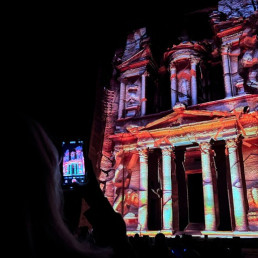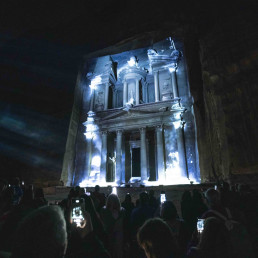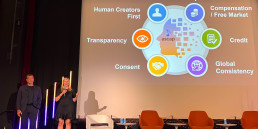Welcome to the mesmerizing world of Petra, where the ancient city’s illustrious history meets modern innovation and creativity at the Petra Light Festival. Nestled in the heart of Jordan, Petra has long been revered as a UNESCO World Heritage Site and one of the most awe-inspiring archaeological wonders in the world. Now, under visionary guidance, the Petra Light Festival illuminates this ancient marvel like never before, uniting the past and present in a symphony of light, music, and storytelling.
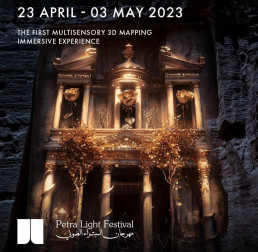
Casting Light on Petra’s Legacy: The Magical Festival of Heritage
I. Introduction
I.A. The Enchantment of the Petra Light Festival
Drawing travelers from far and wide, the Petra Light Festival has become a cultural phenomenon that breathes new life into the historical treasures of Petra. Through cutting-edge technology, dynamic light, and expressive narratives, the festival aims to honor the rich heritage of the Nabataean civilization, and the architects of this architectural marvel.
At the helm of this extraordinary event stands with a passion for technology and a profound appreciation for the arts, it’s a visionary approach to the Petra Light Festival, transforming it into a captivating theatrical display of heritage.
I.B. The Intersection of Tradition and Modernity
Petra’s history dates back to ancient times when it served as a thriving trade hub and a center of culture and civilization. Fast forward to the present, and the Petra Light Festival breathes new life into these ancient stones, merging tradition with modernity in a celebration of the Nabataeans’ enduring legacy.
The festival’s theme, “Rebirth,” serves as a powerful bridge between the past and present. By exploring the culture, rituals, and artistic achievements of the Nabataeans, the Petra Light Festival revives their stories and rekindles a deep sense of connection with the past.
C. Lighting Up Tourism in Jordan
The Petra Light Festival has a profound impact on tourism in Jordan, drawing visitors from around the globe to experience this awe-inspiring event. As the sun sets over Petra’s Treasury, the dynamic light display becomes a beacon, inviting travelers to immerse themselves in the city’s rich history and cultural heritage.
- Reviving Cultural Tourism: By showcasing the ancient wonders of Petra in a contemporary light, the festival breathes new life into cultural tourism. It encourages visitors to delve deeper into the historical significance of the site, fostering a greater appreciation for the region’s heritage.
- Extending the Tourism Season: Traditionally, tourism in Petra has experienced peaks and lulls during specific periods. However, the Petra Light Festival entices travelers to explore the region during shoulder seasons, extending the tourism calendar and benefiting local businesses.
- Fostering Cross-Cultural Understanding: The Petra Light Festival serves as a platform for cultural exchange, drawing a diverse audience from different corners of the world. As visitors come together to celebrate the Nabataean civilization, cultural barriers dissolve, promoting understanding and unity.
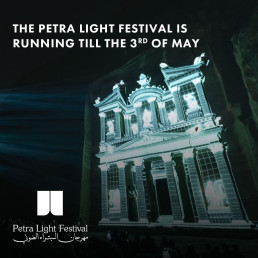
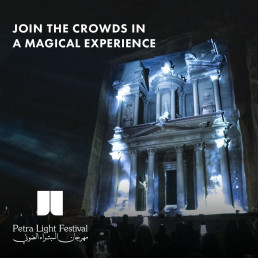
II. Petra: A World Wonder
II.A. Historical Significance and UNESCO World Heritage Site Status
Nestled in the southwestern deserts of Jordan, Petra stands as a testament to human ingenuity and architectural brilliance. This ancient city boasts a history that dates back to around 300 BCE, when it was established as the capital of the Nabataean Kingdom. Over the centuries, Petra flourished as a significant trading hub, linking distant lands in the Middle East, Africa, and Asia.
Petra’s historical significance lies not only in its strategic location for trade but also in its remarkable architectural achievements. Carved into the rose-red cliffs, the city’s impressive rock-cut structures served as palaces, temples, and tombs for the Nabataean elite. Among its most famous landmarks is the Treasury (Al-Khazneh), a grandiose temple facade intricately carved into the sandstone cliffs. The Treasury, with its awe-inspiring beauty, has become the symbol of Petra and draws tourists from all corners of the globe.
In recognition of its outstanding cultural and historical value, Petra was designated as a UNESCO World Heritage Site in 1985. This prestigious status further solidified its importance as a global treasure, and efforts were undertaken to preserve and protect its unique archaeological legacy for future generations.
II.B. Introduction to the Nabataeans and Their Impact on Petra’s Development
The Nabataeans were ancient Arab people who settled in the region around Petra, transforming it into a prosperous and sophisticated city. They were skilled traders, capitalizing on the strategic location of Petra along the caravan routes, which allowed them to control and facilitate trade between Arabia, Egypt, and the Mediterranean world.
To accommodate their growing city, the Nabataeans utilized advanced engineering techniques to create an intricate water management system. With remarkable expertise, they harnessed scarce water resources, ensuring a sustainable water supply to support their expanding population and agricultural needs. This innovation allowed Petra to thrive even in the arid desert environment.
The Nabataeans were also renowned for their artistic flair and architectural prowess. The ornate facades and intricate carvings on Petra’s structures showcase their mastery of stonework and artistic expression. The fusion of Hellenistic, Egyptian, and local architectural styles resulted in a unique and awe-inspiring city that continues to captivate modern visitors.
II.C. Key Attractions in Petra and Their Cultural Importance
The Treasury (Al-Khazneh): As the crown jewel of Petra, the Treasury is a majestic rock-cut temple that once housed the tomb of an important Nabataean figure. Adorned with intricate sculptures and surrounded by towering cliffs, the Treasury’s grandeur and mystery have made it an iconic symbol of Petra’s ancient splendor.
The Monastery (Al-Deir): Carved into the cliffs at the top of a long flight of stairs, the Monastery is another awe-inspiring monument in Petra. Though less decorated than the Treasury, its sheer size and remote location add to its enigmatic allure.
The Siq: Serving as the main entrance to Petra, the Siq is a narrow and winding canyon flanked by soaring cliffs. As visitors traverse the Siq’s shadowed pathway, anticipation builds until they emerge before the grandeur of the Treasury, creating a theatrical unveiling that leaves a lasting impression.
The Street of Facades: A lively thoroughfare lined with impressive rock-cut tombs and facades, the Street of Facades reflects the diversity of Petra’s architectural styles and showcases the Nabataeans’ artistic achievements.
These key attractions, along with countless other lesser-known marvels, offer a glimpse into the ingenuity and cultural richness of the Nabataean civilization. As visitors explore the hidden wonders of Petra, they become part of a timeless narrative that weaves history, culture, and natural beauty into an unforgettable experience.
Petra’s status as a UNESCO World Heritage Site and its reputation as a world wonder has made it a cherished destination for travelers seeking to unravel the mysteries of the past while marveling at the accomplishments of ancient civilizations. In the next section, we will delve deeper into how the Petra Light Festival has transformed the way tourists experience this enchanting ancient city.
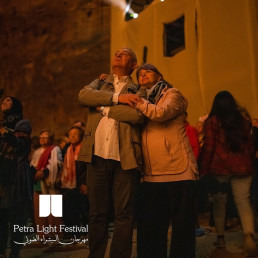
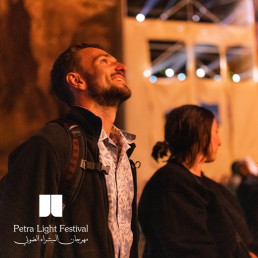
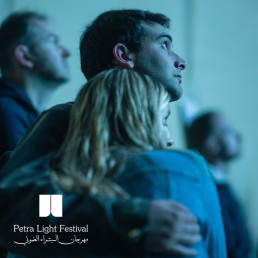
III. About Jordan: A Rich Tapestry of History and Culture
III.A. Overview of Jordan’s Geographical Location and Historical Significance
Nestled in the heart of the Middle East, Jordan is a land of striking contrasts and historical significance. Bordered by Israel to the west, Saudi Arabia to the south and southeast, Iraq to the northeast, and Syria to the north, Jordan’s strategic location has positioned it as a crossroads of civilizations for millennia.
Throughout history, Jordan’s land has been home to various ancient civilizations, each leaving its mark on the cultural landscape. From the Nabataeans who thrived in Petra to the Romans, Byzantines, and Islamic caliphates, Jordan has witnessed the rise and fall of empires, each contributing to the country’s rich heritage.
One of the most enduring symbols of Jordan’s history is the city of Jerash, known as the “Pompeii of the East.” Boasting a remarkably preserved Roman architecture, Jerash is a testament to the region’s historical prominence and its role as a hub of trade and cultural exchange.
III.B. Exploration of Jordan’s Cultural Heritage and Diversity
Jordan’s cultural heritage is a vibrant tapestry woven from the threads of various civilizations and ethnicities. The country’s diverse population embraces a wide range of cultural traditions, customs, and languages, making it a harmonious blend of ancient roots and contemporary influences.
The Bedouin communities, with their nomadic lifestyle and hospitality, epitomize the spirit of Jordan’s traditional heritage. They are known for their warm welcome to travelers, offering insights into their centuries-old traditions, storytelling, and handicrafts.
Beyond its historical heritage, Jordan is also home to a thriving contemporary arts scene. Modern art galleries, theaters, and cultural festivals have emerged as a platform for Jordanian artists to express their creativity and connect with global audiences.
Moreover, Jordan’s culinary traditions delight visitors with an array of flavors and dishes that reflect the country’s diverse cultural influences. From mouthwatering mezzes to delectable desserts, Jordanian cuisine is an invitation to savor the country’s rich cultural identity.
III.C. Role of Tourism in Jordan’s Economy and Its Importance to the Nation
Tourism plays a vital role in Jordan’s economy, contributing significantly to the nation’s GDP and providing employment opportunities to thousands of Jordanians. The country’s unique historical sites, natural wonders, and warm hospitality attract travelers from across the world, seeking to immerse themselves in Jordan’s rich tapestry of history and culture.
The ancient city of Petra, with its UNESCO World Heritage Site status and the allure of the Petra Light Festival, stands as a crown jewel in Jordan’s tourism industry. This architectural wonder draws tourists from every corner of the globe, eager to witness the magic of Petra’s rock-carved treasures.
The vibrant city of Amman, Jordan’s capital, offers a modern contrast to its historical sites. As the economic and cultural hub of the country, Amman boasts contemporary art galleries, lively souks, and diverse culinary experiences, creating a multi-dimensional experience for travelers.
Moreover, the Dead Sea, one of the world’s saltiest bodies of water, provides an otherworldly experience for visitors, who come to float effortlessly in its mineral-rich waters and indulge in therapeutic mud baths.
Tourism’s economic impact extends far beyond the sites themselves. It supports various sectors, including hospitality, transportation, food services, and handicraft industries, driving economic growth and improving the standard of living for local communities.
Furthermore, tourism fosters cultural exchange and understanding, breaking down barriers and promoting global unity. By welcoming travelers from diverse backgrounds, Jordan opens a window to its rich cultural heritage, fostering mutual respect and appreciation among different cultures.
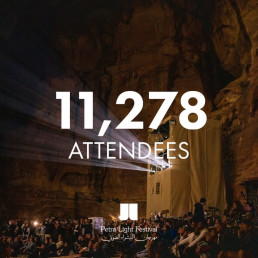
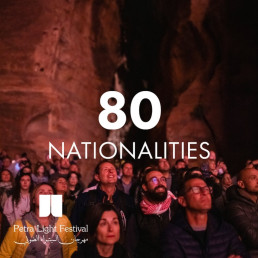
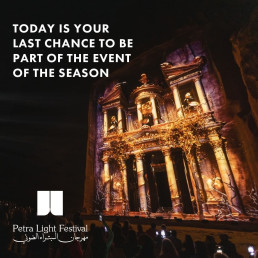
IV. The Petra Light Festival: A Theatrical Celebration of Heritage
IV.A. Description of the Event’s Visual and Musical Elements
The Petra Light Festival casts a spellbinding aura over the ancient city of Petra, captivating visitors with a breathtaking visual and musical spectacle. As the sun dips below the horizon, the Treasury’s majestic facade is gradually veiled in darkness, setting the stage for the enchanting performance.
Dynamic light takes center stage, painting the ancient rock-cut structures with a kaleidoscope of vibrant colors. Skillfully crafted projections breathe life into the stone, transforming the Treasury into a living canvas that showcases the history and cultural heritage of the Nabataeans. Each brushstroke of light narrates a chapter in Petra’s ancient tale, revealing the customs, rituals, and artistic brilliance of this bygone civilization.
The music, carefully curated to complement the visual storytelling, embraces visitors in an emotional embrace, guiding them through the ebb and flow of Petra’s historical journey. Harmonious melodies echo through the canyon walls, drawing the audience deeper into the narrative, evoking emotions, and forging a profound connection with the past.
IV.B. Focus on the Creative Use of Light and Technology in the Show
At the heart of the Petra Light Festival lies a relentless pursuit of creative expression and innovative storytelling. The festival’s artistic visionaries harness cutting-edge technology, employing projection mapping and sophisticated lighting techniques to breathe vitality into Petra’s ancient ruins.
Projection mapping, an artistic marvel in its own right, allows artists to map images and animations onto the intricate surfaces of Petra’s rock-cut structures. The result is a seamless integration of art and architecture, transforming static facades into living masterpieces that transcend time and space.
Laser lights, spotlights, and LED installations collaborate in perfect harmony, accentuating Petra’s grandeur while accentuating intricate details with precision. The clever interplay of light and shadow enhances the three-dimensional nature of the carvings, enveloping the audience in a multi-sensory experience that defies convention.
Behind the scenes, a team of tech-savvy wizards orchestrates this symphony of light, controlling the intricacies of timing and choreography with meticulous precision. The synergy of artistic brilliance and technological expertise enables the Petra Light Festival to elevate the ancient city into an ethereal realm, an ephemeral dream realized through the wonders of modern innovation.
IV.C. Multisensory Experience and Audience Engagement
The Petra Light Festival transcends the boundaries of a traditional visual display; it immerses visitors in a multisensory odyssey, creating an unforgettable journey through time. As visitors walk through the Siq, the narrow canyon leading to the Treasury, anticipation builds with every step, setting the stage for the grand reveal that awaits them.
The combination of vibrant visuals, evocative music, and the surrounding natural acoustics establishes an emotional resonance with the audience. Visitors find themselves not only as passive observers but as active participants in this immersive experience, drawn into the very fabric of Petra’s story.
The festival encourages audience engagement through carefully choreographed movements, encouraging them to find their perfect vantage points for viewing the mesmerizing spectacle. The interplay of light and shadows invites visitors to explore Petra’s rock-carved details in ways they have never imagined.
As the Petra Light Festival progresses, a palpable sense of unity and wonder envelops the audience. Strangers from diverse corners of the world come together, forging connections through shared awe and appreciation for the historical significance of Petra. The festival transcends linguistic and cultural barriers, promoting cross-cultural understanding and reinforcing the universal human experience.
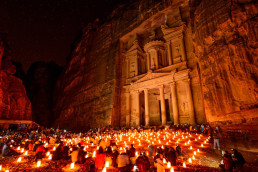
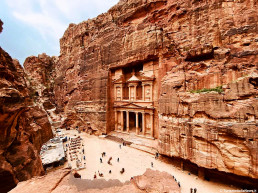
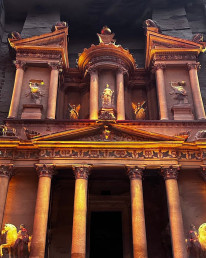
V. How the Petra Light Festival Impacts Tourism in Jordan
V.A. Boost in Visitor Numbers and Extension of the Tourism Season
The Petra Light Festival has proven to be a game-changer for tourism in Jordan, attracting a surge of visitors from around the world. The captivating allure of Petra, enhanced by the mesmerizing display of the festival, entices travelers to embark on a journey of wonder and exploration. The event has become a must-see attraction, drawing tourists who specifically plan their visits to coincide with the festival.
As word spreads about the Petra Light Festival’s magical ambiance, traveler interest peaks during the festival’s dates, leading to a notable boost in visitor numbers. The influx of tourists stimulates economic growth, providing opportunities for local businesses, artisans, and service providers to thrive during the festival season.
Furthermore, the Petra Light Festival has successfully extended the traditional tourism season in Jordan. Historically, peak tourism occurred during certain months, leaving the shoulder seasons with fewer visitors. However, with the advent of the festival, travelers now flock to Jordan beyond the traditional peak periods, spreading the economic benefits of tourism more evenly throughout the year. This extended season ensures that businesses can sustain livelihoods and maintain momentum, even during quieter times, contributing to a more stable and resilient tourism industry.
V.B. Economic Impact on Local Businesses and the Hospitality Industry
The economic impact of the Petra Light Festival resonates far beyond the boundaries of Petra itself. Local businesses and the hospitality industry across Jordan experience a positive ripple effect from the festival’s success. As travelers arrive in Jordan to experience the magical celebration, they require various goods and services during their stays, from accommodations and transportation to dining and souvenir shopping.
Hotels and guesthouses in Petra and neighboring towns witness increased occupancy rates as tourists seek comfortable and convenient lodgings to complement their festival experience. Restaurants and cafes, too, flourish during the festival season as they cater to the culinary preferences of their diverse international clientele.
Local artisans and craftsmen also reap the rewards of increased visitor footfall, as tourists seek to bring home a piece of Jordan’s unique cultural heritage in the form of handcrafted souvenirs and keepsakes. The festival provides a platform for these local artisans to showcase their talents, contributing to the preservation and promotion of Jordan’s traditional crafts.
V.C. Promotion of Cultural Exchange and Global Reach for Jordan
The Petra Light Festival stands as a beacon of cultural exchange, promoting global understanding and appreciation for Jordan’s rich heritage. As international travelers flock to Petra, they bring with them diverse backgrounds, cultures, and perspectives. Engaging with the vibrant atmosphere of the festival, visitors learn about the Nabataeans and their contributions to civilization, fostering cross-cultural connections and a deeper sense of shared humanity.
Moreover, as visitors return to their home countries, they become ambassadors for Jordan’s cultural richness and the Petra Light Festival experience. Through word-of-mouth, social media, and travel blogs, they share their awe-inspiring encounters, sparking curiosity and inspiring others to embark on their own journeys to Jordan.
The global reach of the festival expands beyond physical borders. Media coverage, both local and international, showcases the Petra Light Festival to audiences worldwide. This exposure positions Jordan as a destination with a unique offering, attracting travelers seeking to immerse themselves in the cultural marvels of this enchanting country.
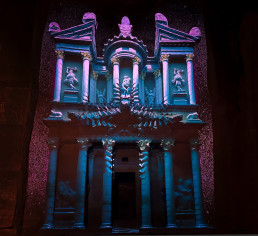
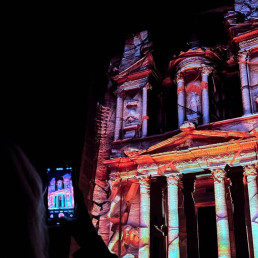
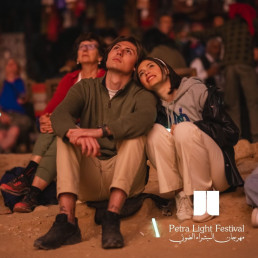
VI. Promoting Tourism and Economic Growth Through Festivals
VI.A. The Role of Cultural Festivals in Promoting Tourism Globally
Cultural festivals have emerged as powerful catalysts in promoting tourism and fostering cross-cultural exchange on a global scale. These celebratory events offer a unique platform for countries to showcase their rich heritage, artistic traditions, and diverse cultural expressions. As travelers seek authentic and immersive experiences, cultural festivals become magnets, drawing visitors from different corners of the world.
Cultural festivals celebrate the essence of a nation’s identity, encapsulating its history, customs, and values. They offer a glimpse into the soul of a country, allowing travelers to forge meaningful connections with local communities and creating a deeper understanding of the host culture. The allure of cultural festivals lies in their ability to transport visitors into the heart of a country’s traditions, artistry, and way of life, leaving indelible impressions that resonate long after the festival concludes.
Furthermore, cultural festivals contribute to the preservation and revitalization of intangible cultural heritage. By showcasing traditional music, dance, crafts, and culinary delights, these festivals breathe new life into age-old customs, ensuring that they endure and evolve for future generations to embrace and celebrate.
VI.B. Economic Benefits to the Host Country and Local Communities
Cultural festivals have far-reaching economic benefits that extend beyond the host country’s tourism sector. They inject vitality into local economies, generating revenue and creating employment opportunities for various industries.
The influx of tourists during festival periods stimulates the hospitality industry, including hotels, restaurants, and transportation services. Local artisans and craftsmen experience increased demand for their products, leading to the growth of micro-enterprises and cultural markets.
The economic benefits of cultural festivals also extend to other sectors, such as retail, entertainment, and event management. From souvenir shops to concert organizers, these industries thrive during festival seasons, contributing to the overall economic growth of the host country.
Moreover, cultural festivals can have a positive impact on rural and underdeveloped regions. By promoting festivals in these areas, tourism is diversified, and visitors are encouraged to explore lesser-known destinations, spreading economic benefits and supporting sustainable community development.
VI.C. Importance of Sustainability and Responsible Tourism Practices
As cultural festivals gain prominence in the tourism industry, it becomes essential to prioritize sustainability and responsible tourism practices. Ensuring that festivals have a minimal ecological footprint and respect the local cultural and natural heritage is crucial for their long-term viability.
Sustainability efforts can include reducing waste, promoting eco-friendly transportation options, and utilizing renewable energy sources during festival events. Responsible tourism practices advocate for fair wages and ethical treatment of workers involved in festival operations, supporting a socially conscious approach to tourism.
Additionally, cultural festivals present an opportunity to educate visitors about environmental conservation and cultural preservation. By raising awareness about the importance of protecting natural and cultural heritage, festivals can inspire travelers to be responsible stewards of the destinations they visit.

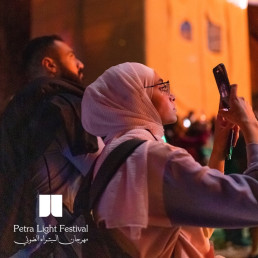
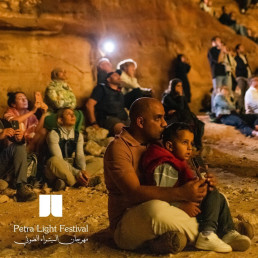
VII. Impact on Different Industries and Sectors
VII.A. Supporting Local Artisans and Craftsmen
The Petra Light Festival extends its impact beyond the realm of tourism by nurturing and supporting local artisans and craftsmen. As visitors flock to Petra to experience the festival, they are drawn to the allure of handcrafted souvenirs and cultural artifacts. Local artisans seize this opportunity to showcase their talents and preserve traditional crafts, providing travelers with unique mementos that embody the essence of Jordan’s cultural heritage.
The festival acts as a platform for these artisans to gain visibility and connect with a global audience. The increased demand for their products during the festival season bolsters their livelihoods and incentivizes the continuation of their traditional crafts. This economic empowerment promotes intergenerational knowledge transfer, ensuring that ancient artisanal techniques endure and flourish for generations to come.
VII.B. Encouraging Investment in Infrastructure and Tourism-Related Services
The success of the Petra Light Festival stimulates investment in infrastructure and tourism-related services, driving long-term growth and development in the region. The surge in visitor numbers during the festival season prompts both private and public sectors to invest in the enhancement of facilities, transportation, and accommodation options.
Local businesses recognize the economic potential of the festival and respond by upgrading their services to meet the expectations of discerning travelers. As a result, the hospitality industry experiences a boost in the quality and diversity of accommodations, restaurants, and entertainment offerings, elevating the overall visitor experience.
Beyond the immediate festival period, these investments contribute to the development of Jordan’s tourism sector as a whole. The improved infrastructure and tourism-related services lay the groundwork for sustainable growth, making Petra and other destinations in Jordan more appealing to tourists throughout the year.
VII.C. Cultural and Educational Opportunities for the Community
The Petra Light Festival goes beyond its role as a visual spectacle; it enriches the local community with cultural and educational opportunities. The festival provides a platform for local performers and artists to showcase their talents, contributing to the preservation and promotion of Jordan’s cultural heritage.
Participation in the festival enables the local community to actively engage with visitors, fostering cultural exchange and mutual understanding. This interaction enhances cultural awareness, breaking down barriers and promoting appreciation for diversity.
Moreover, the festival encourages educational initiatives that explore the historical significance of Petra and the Nabataean civilization. Local schools and educational institutions incorporate the festival into their curricula, enabling students to connect with their heritage and history in a tangible and immersive manner.
Through cultural and educational initiatives, the Petra Light Festival nurtures a sense of pride and ownership among the local community. As they witness the global acclaim and admiration for their cultural heritage, residents of Jordan’s host communities take pride in their role as custodians of this ancient treasure.
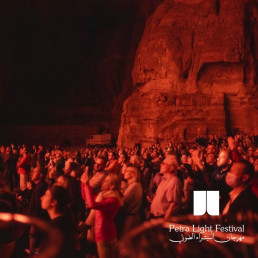
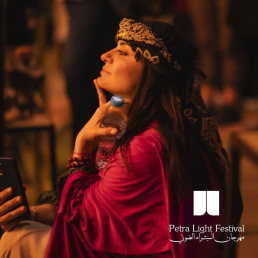
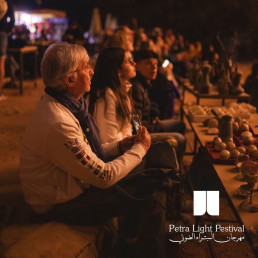
Watch the full videos

